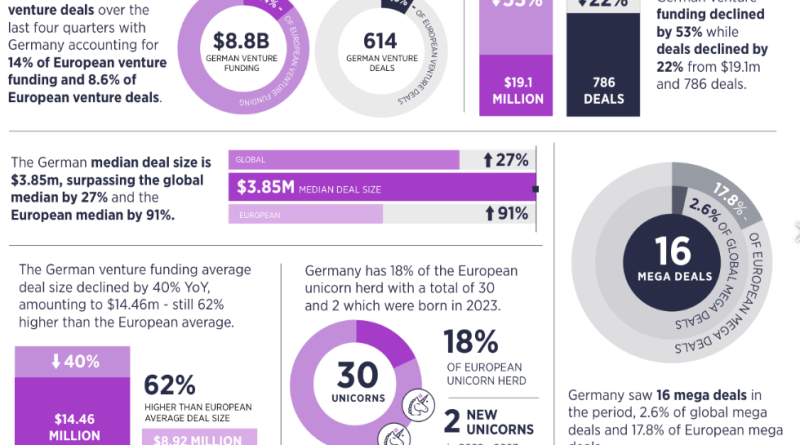Crypto Adoption in 2025: 7 Effective Strategies to Accelerate Growth
- 1. Enhance User Education and Awareness
- 2. Simplify Onboarding Processes
- 3. Build Robust Security Measures
- 4. Foster Strategic Partnerships
- 5. Implement Regulatory Compliance
- 6. Leverage Innovative Technologies
- 7. Promote Use Cases Beyond Investment
1. Enhance User Education and Awareness
Understanding the Fundamentals of Crypto
One of the key factors driving crypto adoption in 2025 is the widespread understanding of blockchain technology and cryptocurrencies. Many potential users still lack basic knowledge about how digital assets work, which creates hesitation. Educating the public through accessible contentâsuch as simple tutorials, infographics, and webinarsâcan demystify crypto for newcomers.
For example, platforms like Coinbase and Binance have successfully increased user engagement through educational initiatives. Ongoing efforts in digital literacy directly impact how confident people feel about investing or transacting with crypto. This confidence boost is essential for accelerating crypto adoption across diverse demographics.
To make education more effective, consider creating community-focused workshops or partnering with educational institutions. These efforts can bridge the knowledge gap, making cryptocurrency more approachable for everyone.
Utilizing Media and Influencers
Influencers and media channels play a significant role in shaping perceptions around crypto. In 2025, collaborating with trusted figures in finance and technology can enhance awareness and drive adoption. These influencers can clarify misconceptions, showcase real-world applications, and share success stories that resonate with a wider audience.
Moreover, leveraging social media campaigns that explain the benefits of crypto adoptionâsuch as lower transaction fees or faster remittancesâcan reach millions rapidly. Authentic storytelling about how crypto improves financial inclusion fosters trust among skeptical users.
Companies should prioritize consistent, transparent communication to build credibility and foster a positive outlook on crypto adoption efforts.
Practical Tips for Educators
- Create clear, jargon-free content tailored to beginner audiences.
- Launch interactive online courses and Q&A sessions.
- Partner with platforms that already have a user base eager to learn about crypto.
2. Simplify Onboarding Processes
Reducing Barriers to Entry
Simplifying onboarding procedures is fundamental in accelerating crypto adoption in 2025. Many potential users are deterred by complex registration processes or security verifications. Streamlining these steps with user-friendly interfaces and minimal requirements encourages more sign-ups.
Implementing biometric authentication and one-click verification options can significantly enhance user experience. Examples like Revolut and Robinhood show that simplicity in onboarding leads to higher conversion rates.
Additionally, providing clear instructions and troubleshooting support during onboarding reassures new users they can navigate initial hurdles comfortably.
Digital Identity Solutions
The adoption of decentralized digital identity solutions can make onboarding safer and more seamless. These tools allow users to verify their identities securely without sharing excessive personal information, which respects privacy and increases confidence.
Blockchain-based identity platforms also prevent fraud and facilitate quicker KYC (Know Your Customer) checks. As privacy regulations tighten, offering transparent, efficient verification processes will become a competitive advantage.
Organizations should consider integrating mobile-friendly and multi-language onboarding systems to reach global audiences effectively.
Actionable Tips for Platforms
- Use step-by-step guides and video tutorials during onboarding.
- Offer support chatbots to assist new users in real-time.
- Test onboarding flow regularly for friction points and optimize accordingly.
3. Build Robust Security Measures
Protecting User Assets
As crypto adoption grows rapidly, so does the threat landscape. Users need assurance that their digital assets are safe. Implementing advanced security protocolsâsuch as multi-factor authentication, cold storage, and encryptionâbuilds trust and encourages wider participation.
Crypto exchanges like Kraken and Gemini continuously update their security measures, demonstrating leadership in safeguarding assets. Regular security audits and bug bounty programs further protect users from vulnerabilities.
Security is not only about technology but also about educating users to recognize phishing scams and suspicious activity. Well-informed users are less likely to fall victim to attacks.
Insurance and Compensation Funds
Introducing insurance options for crypto holdings can mitigate risks and boost confidence. Initiatives like the Cryptocurrency Insurance Fund provide a safety net for users in case of theft or hacking.
Financial institutions may consider offering insurance policies tailored to crypto assets, similar to traditional banking. This fosters a safer environment that promotes adoption among risk-averse individuals.
By ensuring transparent communication about security measures and insurance coverage, organizations can establish trust and accelerate crypto adoption efforts.
Tips for Security Enhancement
- Implement multi-layer security protocols for platforms.
- Educate users on creating strong passwords and avoiding scams.
- Regularly update security systems to address emerging threats.
4. Foster Strategic Partnerships
Collaborating with Traditional Finance
In 2025, bridging the gap between traditional finance and crypto is essential for widespread adoption. Banks and financial institutions partnering with crypto firms can facilitate seamless fiat-to-crypto conversions, making transactions more accessible.
For example, JP Morganâs blockchain initiatives and PayPalâs crypto integrations have paved the way for mainstream acceptance. These collaborations inspire confidence and legitimize crypto as a viable part of the financial ecosystem.
Partnerships also enable shared resources for education, security, and compliance efforts, accelerating overall crypto adoption.
Engaging Industry and Tech Leaders
Building alliances with tech giants, industry associations, and startups can unlock innovative solutions and expand reach. These partnerships drive the development of scalable infrastructure, user-friendly platforms, and increased trustworthiness.
Participation in industry coalitions creates a unified front to address regulatory and technological challenges. Such collaborations propel the ecosystem forward and make crypto more mainstream.
Proactive joint ventures often generate media attention and consumer interest, further fueling adoption.
Action Steps for Partnership Success
- Identify organizations with complementary strengths.
- Develop mutually beneficial initiatives like co-branded educational campaigns.
- Leverage network effects through joint product launches or API integrations.
5. Implement Regulatory Compliance
Adapting to Evolving Laws
Clear, consistent regulation plays a crucial role in shaping the future of crypto adoption in 2025. Firms need to stay ahead of regulatory changes and adapt their operations accordingly. Navigating complex legal environments requires ongoing monitoring and compliance strategies.
Proactively working with regulators can help craft balanced policies that foster innovation while safeguarding users. Countries adopting crypto-friendly regulations attract more businesses and users, fueling growth.
Open communication and transparency about compliance efforts build trust with users and authorities alike.
Utilizing Compliance Technology
Advanced compliance tools like AML/KYC software streamline regulatory adherence, reduce fraud, and ensure data privacy. These technologies enable rapid onboarding and transaction verification, essential for scaling operations.
In 2025, integrating AI-driven monitoring and real-time reporting will become standard practice, making compliance more efficient and less error-prone.
Organizations should prioritize building compliance into their core systems from the ground up.
Key Takeaways for Ensuring Compliance
- Stay informed on regional and international regulatory updates.
- Invest in smart compliance software that integrates seamlessly with your platform.
- Engage legal experts to navigate legal complexities proactively.
6. Leverage Innovative Technologies
Embracing Blockchain Scalability Solutions
Blockchain scalability is a significant hurdle in mainstream crypto adoption. In 2025, solutions like layer-2 protocols (e.g., Lightning Network, Optimistic Rollups) allow faster and cheaper transactions, encouraging users to transact more confidently.
These technologies improve user experience by reducing delays and fees, making crypto more practical for daily use. Major networks like Ethereum actively develop such solutions, paving the way for mass acceptance.
Adopting these innovations will help platforms handle larger user bases without compromising performance.
Integrating Decentralized Finance (DeFi)
DeFi platforms offer accessible financial services without traditional intermediaries. In 2025, integrating DeFi options like lending, staking, and decentralized exchanges (DEXs) broadens use cases for crypto adoption.
This expansion makes crypto not just an investment tool but a practical part of everyday finance. Major DeFi protocols such as Aave and Uniswap showcase that DeFi can be seamless and user-friendly.
Inclusive DeFi ecosystems attract new users seeking financial autonomy, thereby accelerating adoption.
Actionable Tech Adoption Tips
- Stay updated on the latest layer-2 solutions and integrate them into your platform.
- Offer beginner-friendly DeFi interfaces with educational support.
- Invest in scalable infrastructure to accommodate growth smoothly.
7. Promote Use Cases Beyond Investment
Cryptocurrency for Payments and Remittances
In 2025, crypto is increasingly used for everyday transactionsâpaying bills, shopping, remittancesâbeyond merely investment. Lower fees, faster settlement times, and global reach make crypto appealing for consumers and businesses alike.
Real-world examples include crypto-enabled remittance services like Ripple and cross-border payment platforms using stablecoins. These applications make financial services more inclusive and accessible worldwide.
Encouraging merchants to accept crypto expands its utility, thereby enhancing overall adoption.
Tokenization of Assets
Tokenizing real-world assets such as real estate, art, or commodities unlocks liquidity and fractional ownership. Such innovations attract new user segments, including institutional investors and digital asset enthusiasts.
This approach facilitates broader participation and creates new financial instruments, fostering a more vibrant crypto ecosystem.
Platforms like RealT and AMG NFT illustrate the potential of asset tokenization, making crypto adoption more diverse and sustainable.
Education and Practical Tips for Expanding Use Cases
- Highlight real-world scenarios where crypto improves usability.
- Partner with merchants and service providers to accept crypto payments.
- Create incentives like discounts or rewards for using crypto in everyday transactions.
Conclusion: Embracing the Future of Crypto Adoption in 2025
As we’ve explored, accelerating crypto adoption in 2025 requires a multifaceted approach, from enhancing education and simplifying onboarding to leveraging cutting-edge technology and fostering strategic partnerships. Security, compliance, and expanding the use cases beyond investments are also critical components. By implementing these seven strategies, businesses and individuals can contribute meaningfully to a vibrant, inclusive crypto ecosystem.
Remember, the key to a successful future lies in making crypto accessible, secure, and relevant for everyone. The journey toward widespread crypto adoption is well underway, and 2025 promises to be a pivotal year for realizing its full potential.
Frequently Asked Questions
1. What is the significance of crypto adoption in 2025?
Crypto adoption in 2025 is crucial for mainstream financial integration, increased usability, and fostering innovation within the digital economy. It reflects growing acceptance from both users and institutions.
2. How can new users start their journey with cryptocurrency?
Begin with educational resources, choose reputable platforms with simple onboarding, and start small with secure wallets. Staying informed and cautious helps build confidence in using crypto.
3. Why is securing crypto assets important for adoption?
Security measures protect users from theft and scams, building trust essential for mass adoption. Robust security ensures that people feel safe when holding or transacting with digital assets.
4. How does blockchain technology foster crypto adoption?
Blockchain provides transparency, security, and decentralization, which are attractive features for users worldwide. Innovations like layer-2 solutions and DeFi make transactions faster and more practical, boosting adoption.
5. What are some practical strategies to promote crypto use cases beyond investment?
Encouraging payments, tokenization of assets, and integrating crypto into daily financial services expand real-world applications, making crypto more relevant and useful for everyone in 2025.
Related Content
- Price analysis 7/19: BTC, ETH, XRP, BNB, ADA, SOL, DOGE, MATIC, LTC, DOT
- 10 Effective latest bitcoin investing trends to watch in 2025
- US Senate confirms Philip Jefferson as Federal Reserve vice chair
- Texas is home to nearly 30% of all Bitcoin hash rate — Foundry
- Bittrex challenges SEC’s authority in crypto lawsuit, seeks dismissal


